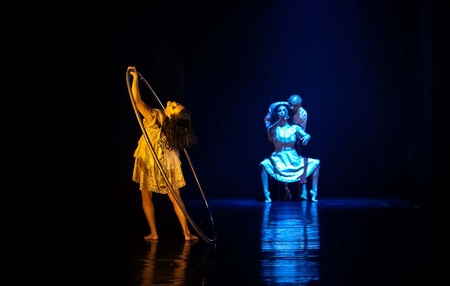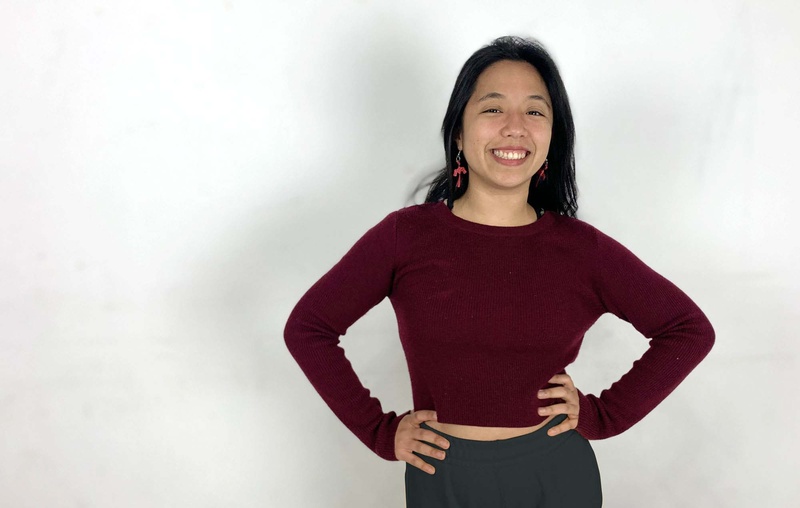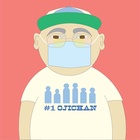There is a common phrase that says that “the performance must continue” and that phrase seems to respond to the artistic work of Yuriko Tanaka, a Nikkei circus artist who, in the face of adversities such as the pandemic, and her own demand to experiment with other languages, has had a period very productive despite the closure of theaters and other venues or stages in Peru.
In 2019, the stage show oja , directed and written by her, had won the XIV Peruvian North American Theater Festival 2019 1 . It was his first foray into theater direction and it was presented at the Auditorium of the Peruvian North American Cultural Institute (ICPNA), at the beginning of the year, in addition to being part of the cultural programming of the Lima 2019 Parapan American Games.
For the end of the year, a profondos function was organized at the Cine Olaya Cultural Center, with the aim of complementing the costs of the participation of the cast of oja in Mexico, where it would be part of the fourth edition of the International Festival Escenarios Suspendidos , organized by the company independent Tránsito Cinco Performing Arts, and other events in Guadalajara.

“The four performances of oja at the ICPNA were sold out, in December we traveled to Mexico and did a tour, thanks to the fact that our project was one of the winners of the Economic Incentives for the Performing Arts 2019, awarded by the Ministry of Culture ”. They were at the Periplo Forum, for development and culture, in the city of Tulum, where they presented at the Balam Beh ecovillage, and they returned to Lima with a suitcase loaded with projects that were stopped due to the pandemic.
Stopped movements
In her first year studying at La Tarumba, Yuriko fractured her forearm (radius and ulna) but that did not discourage her. In the middle of last year, a fracture of the tibia and fibula, just before the trip, did not prevent him from going on tour. However, the coronavirus crisis has postponed its return to the stage due to the closure of theaters as a preventive measure. It has been a particularly difficult time for performing artists who have had to reinvent themselves.
Yuriko studied graphic design and advertising and in the first months of isolation in Peru she dedicated herself to this specialty, collaborating with La Casa Flexible , a space in which exercises are performed to increase body self-awareness through flexibility and Pilates, which directed by Gaby Olivera. “First there were the designs and then Gaby suggested I teach some classes. I was coming from a fracture and I began to recover, reconnect and activate myself emotionally. From the Flexible House we have that desire to reconnect with the body and mind.”

These classes were something new for Yuriko, who had previously taught children in La Tarumba and who now met students of all ages, who had to connect by video camera for the lessons, ranging from basic education, to improving posture and strengthen the body, at the advanced level where people with experience in contortion participate. “We have students in private classes up to seventy years old,” says Yuriko.
Flexible artists
The experience at La Casa Flexible, aimed at people who work long hours at home in front of a computer and who have a lot of accumulated tension, has been a way to explore their own limitation of working where they like most: on stage. “The sector has been hit hard for artists and dancers, as well as students who were in training processes,” says Yuriko.”
Unable to rehearse, Tanaka decided to focus on writing. In the middle of the year, “ Back in Bach ” changed to audiovisual language and she participated in the development of the script and some scenes in which Franklin Chávez and Daniel Galindo participated, combining gestural theater, body puppets and the live music of Johann Sebastian Bach, performed on guitar. Additionally, two monologues he wrote that were going to be staged this year had to change format.
In times of pandemic and reinvention, Yuriko could not stop being less flexible and the first one, which he made with Gaby Olivera, is called “Musa paradisiaca”. The second is titled “March 15, year 2033”, and was designed with Frank García. Both will be released through the Municipality of Lima in video format, as part of its “ Culture from Home ” program. “I'm focusing on dramaturgy,” says Yuriko who, accustomed to expressing herself with her body, now also does so with words.

Law and protest
It is not easy to be an artist in Peru and even less so in the performing world. You write, act, produce and manage everything in one package. “For independents it is more complex, there are no spaces and the protocols to open rooms with less capacity do not consider the investment in equipment. But there is the light of producing from other media, the audiovisual, that is the way to continue creating.”
Between the production of digital works and the possibility of returning to the stage, another public space emerged as a means to exercise the right to protest: the marches for the establishment of an illegitimate government that unleashed the repudiation of the majority of the population that came out to protest. demonstrate in the streets. Among them, a group that was always present was that of artists.
“The circus is culture, Congress is garbage” was one of the slogans raised by the circus performing arts union in the face of the usual comparisons of clowns with shameful politicians. If from its origin performing art was a free medium to question social models, this year it returned many artists to the streets. “It is a way of taking back the public space, the circus is very street-oriented and the street asks you for another way of speaking to it.”
In times of crisis and change, art in Peru seeks to return to open spaces (squares, parks, streets) with models that have already been successful in other countries. “There is a concern among artists in general about management policies at the government level. We have to be more involved, prepared and organized,” says Yuriko Tanaka, remembering that there is an upcoming march and many unaddressed rights that require a voice, and other languages, that help them be heard.
Note:
1. “ OJALÁ - XIV North American Peruvian Theater Festival ,” Cultural Agenda in Lima.
© 2021 Javier García Wong-Kit







